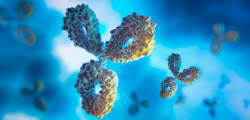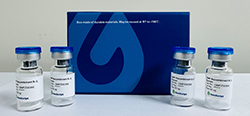CytoSinct™ CD3 Nanobeads, human (GMP)
The CytoSinct CD3 Nanobeads, human (GMP) is used for in vitro isolation or depletion CD3+ cells from fresh or frozen peripheral blood mononuclear cells (PBMC)s), leukapheresis products or single cell suspension based on the surface expression of human CD3. Due to the nanoscale structure of the CytoSinct CD3 Nanobeads, human (GMP), the excess reagent can be removed by centrifugation or conventional supernatant replacement.
| L00934 | |
|
|
|
| 询价 | |
|
|
|
|
|
|
| 联系我们 | |





































